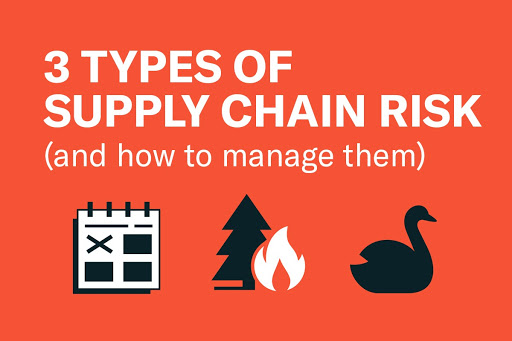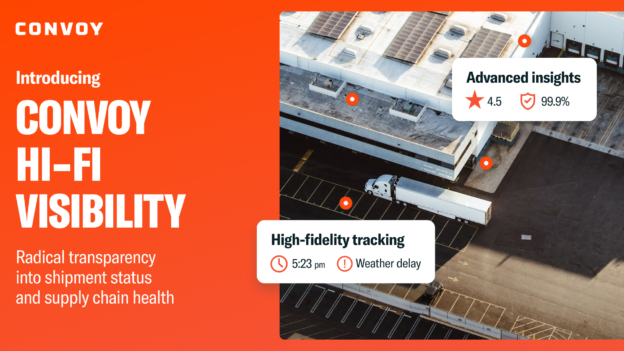3 types of supply chain risk (and how to manage them)
Shippers • Published on September 3, 2020
2020 has shone a spotlight on the importance of supply chain risk management.
In March and April, COVID-19 shocked commerce in North America. Grocery shelves emptied, truck prices whipsawed, carriers reduced their workforce, and logistics teams struggled to keep up with demand spikes.
In August, multiple severe weather events hit different regions of the US. The Midwest derecho devastated corn and soybean crops in Iowa, Hurricane Laura made landfall on the Gulf Coast, and more than 600 wildfires have burned over 1.2 million acres in California.
These macro-level events compound on top of the daily challenges faced by logistics teams: tender rejections, carrier falloffs, late deliveries, lapses in communication, and the myriad ways in which things can go wrong.
These disruptions are emblematic of three types of risks supply chains face:

Let’s dive into how each of these categories of supply chain risk and look at how logistics teams can manage each of them.
Day-to-day risk management
Every day, logistics teams respond to unpredictable shifts in demand for their companies’ goods. As consumer expectations rise, so do the requirements on supply chain performance. As supply chains become more connected and complex, so do the points of vulnerability to disruption.
The day-to-day risks point to the need for reliable freight providers. Logistics teams should look for carriers who consistently deliver loads on time, in good condition, at agreed upon prices. This is a foundation to any successful freight partnership.
Convoy helps companies manage their day-to-day supply chain risks with our track record of reliability.
- High tender contract acceptance rates in tight and soft markets
- We mitigate by responding to carrier falloffs 10x as fast as other providers
- Guaranteed coverage on backup and spot freight
- Strong OTP and OTD performance and transparency in reporting
- A proven track record of safety, with low levels of incidents and cargo claims
Seasonal risk management
Supply chains also face seasonal uncertainty. We can expect regional disruptions during an Atlantic hurricane season, California wildfires, and strong winds and tornadoes in the Plains and Midwest. Transportation planners can also expect seasonal spikes in demand like holiday season and crunches in carrier capacity like DOT week and brake safety check week.
Seasonal risks highlight the importance of supply chain visibility. With the proper data and insights, logistics teams can gain an accurate view of supply chain and facility operations to understand historical trends, identify problems, and take action faster.
With more than 1,000 data points collected on each shipment, Convoy brings a high degree of supply chain visibility to our customers.
- 24/7 GPS tracking on every shipment
- Facility analysis, tracking wait times and incidentals
- Integrations with leading supply chain visibility software
- Supply chain consulting from our data science and account management teams
“Black swan” risk management
The biggest threat to supply chains are high-impact, low-probability events that are impossible to predict. Also known as “black swan” events, these can wreak havoc on a supply chain. Examples of such events include the terrorist attacks of 9/11, the global financial crisis of 2007-2008, and, most recently, the COVID-19 pandemic and economic fallout.
In unpredictable events like this one, supply chain teams may need scale capacity at a moment’s notice without sacrificing performance. Flexibility is key to addressing black swan risks.
Convoy has helped our customers through COVID-19 by providing flexible capacity with our digital freight network. When Frost & Sullivan recognized Convoy at their 2020 Company of the Year Awards, they reported that, “Convoy offers real flexibility within its freight network. They help shippers respond more quickly to changing market conditions, improving their supply chains’ resilience to demand shocks.”
Efficiency and automation are key to supply chain risk management
In any supply chain risk scenario: when something goes wrong, you need to act fast. In times of crisis, operations that rely on phone calls, emails, spreadsheets, and fax may be too slow to respond. Automated systems that use technologies such as machine learning are better equipped to adapt instantly.
Supply chain disruption can happen at any hour of the day. Convoy automates our operations so that our digital freight network operates 24/7. Even when you’re asleep, Convoy’s machine learning technology automatically manages many steps of the shipment lifecycle – accepting guaranteed tenders, ensuring accurate freight pricing, finding the highest quality drivers, setting appointments, and tracking every load.
Resilient supply chains: risk management for every environment
While these three challenges vary in their duration, intensity, and predictability, their antidote is the same. Supply chain resilience enables teams to reduce the risk of uncertainty while also improving the efficiency and reliability of day-to-day operations.
If you’re interested in learning more about managing risks and building resilient supply chains, read our free white paper: 5 Fundamentals of Supply Chain Resilience.



